The Two Bridges, Due Ponti, was a well-known landmark in Venice until the early 1800s. So was the Oratorio de l’Anconeta – the Oratory of the Little Icon.
Strada Nova
This post is part of a series on the changes made to create the Strada Nova, which connects the railroad station with the Rialto area.
It is, in fact, quite common to find references in old documents and books like “the rental of a workshop near the Due Ponti”, or a donation to “the oratory at the Due Ponti.”
Obviously, people back then considered such a reference sufficient to explain where something was. It probably was sufficient too, but today few would understand.
None of the localities exist any more.
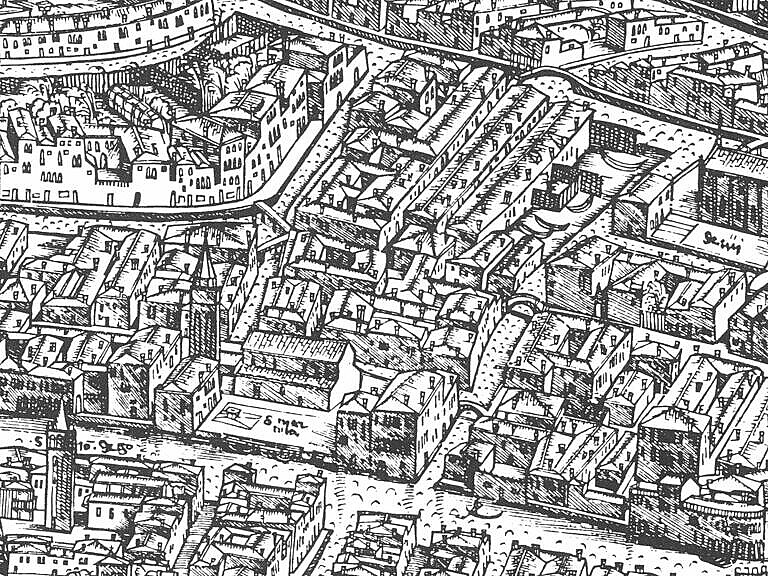
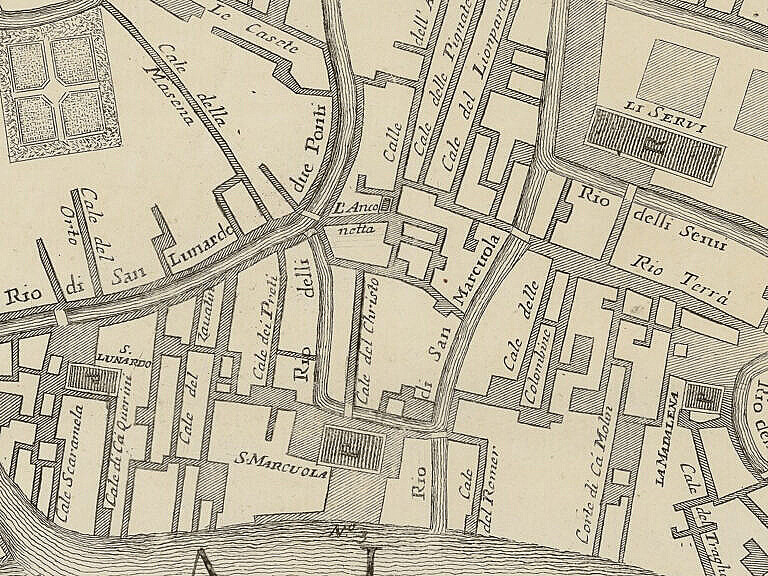
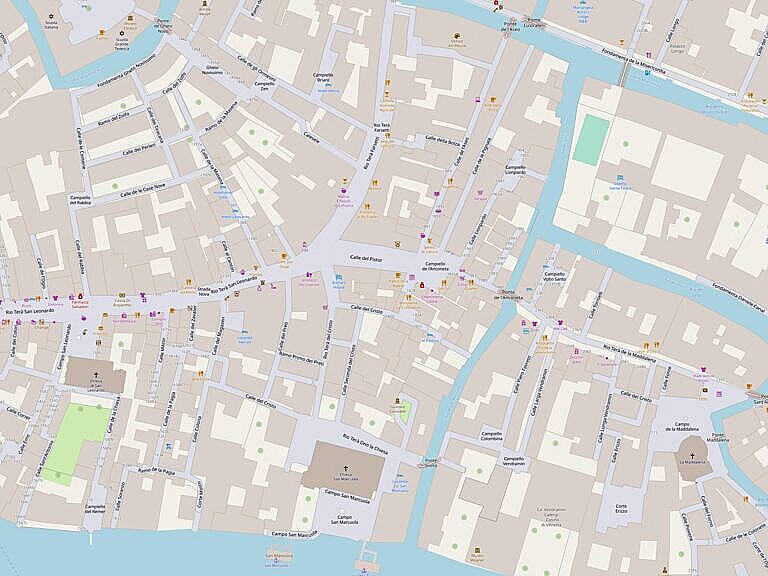
Due Ponti – a double bridge
The Rio di San Leonardo flowed into the middle of another canal, thus creating a three-way intersection.
A double V shaped bridge connected all the fondamente at the point of the junction. The two bridges shared a base on one side.
This double bridge was quite unique in Venice, and hence gave the place its name.
The other canal was the Rio dei Due Ponti, even though the southern half is sometimes given as Rio del Cristo, after a nearby alleyway.
L’Oratorio de l’Anconeta
The Oratorio de l’Anconeta was a small oratory very close to the Due Ponti, at the end of a narrow alleyway, Calle del Pistor, on a tiny square called Campiello del Boter.
The name Anconeta originates from the Greek eikòn, an icon as a religious image. In the Venetian language it became ancona, in the diminutive anconeta. The italianised version is anconetta, and both forms are common.
The backstory of the Oratorio de l’Anconeta is this:
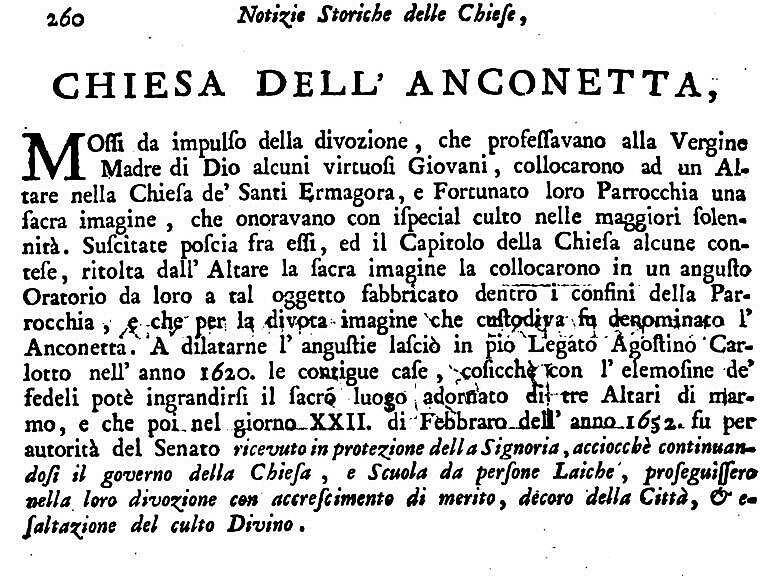
Moved by the impulse of devotion that some virtuous young men professed to the Virgin Mother of God, they placed a sacred image on an altar in the Church of Santi Ermagora and Fortunato in their parish, which they honoured with special veneration on major solemnities. After it aroused some disputes between them and the Chapter of the Church, they removed the sacred image from the Altar and placed it in a narrow Oratory which they had built for this purpose within the boundaries of the Parish, and which, due to the sacred image it contained, was called the Anconetta.
From Corner (1758), p. 260.
The year of these events is not clear, but it might have been in the early 1500s.

The panoramic view of Venice by Jacopo de’ Barbari from 1500 doesn’t show the oratory, but it might just be because it was still too insignificant. A similar engraving by Giovanni Andrea Vavassore from 1525 has a cross on a building in the right place, but no other indications.
It was, however, an established institution in the early 1600s.
In 1623, a large bequeathment allowed the complete reconstruction of the oratory:
I leave my house in Venice located at S. Marcuola in Anconeta, at the Due Ponti, to the Glorious Virgin Maria, or rather, I give it back to her, praying to the Glorious Mother of God to inspire in the hearts of those who manage that brotherhood who want to enlarge the church and square it, and so that they can do it without excuse, I want that, having paid the dues to S. Marco of the said house, from time to time, that the rents will be paid, until they gather so much money that the said house can be demolished, and enlarge the church up to the large altar, and up to the level of the attic of the said church, and up to the calle that goes to the Due Ponti, where another door may be built, with the obligation to have me said every day a death mass for my soul in perpetuity.
Last will and testament of Pasquino Carlotti, dated August 24th, 1623.
More such donations followed, so in the 1700s the oratory boasted three marble altars and a substantial collection of paintings.
Interment and demolition
When the municipal administration had the Rio di San Leonardo and the Rio del Christo interred in 1818, the double bridge at the Due Ponti disappeared too.
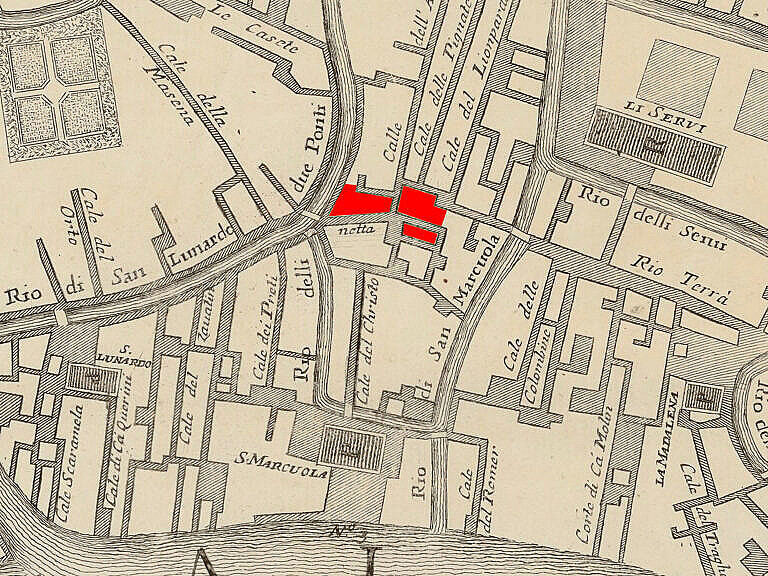
Soon the remaining dead-end segment of the Rio dei Due Ponti became the Rio Morto (the dead canal), and the last bit of the name died with it.
Like so many other religious institutions, the Oratorio de l’Anconeta was suppressed in 1806, and many of the artworks sold off.
The building stood half empty and abandoned until 1855, when the Strada Nova project arrived to the area.
Three blocks of houses were demolished in the area, which sadly included the oratory building.
Now?
There are no visible signs that the locality Due Ponti ever existed. The area is now an anonymous crossroads.
The former densely built-up area around the Oratorio de l’Anconeta is now an entirely open space. The once narrow Calle del Pistor is as wide as the Rio Terà di San Leonardo, and the new Campiello dell’Anconetta appears as a continuation of the road. The former Corte del Boter is now just a corner of the larger square.
A stone in the pavement mark where the oratory once stood, but the inscription is no longer readable.
The name Anconeta is still there, but its raison d’être isn’t.
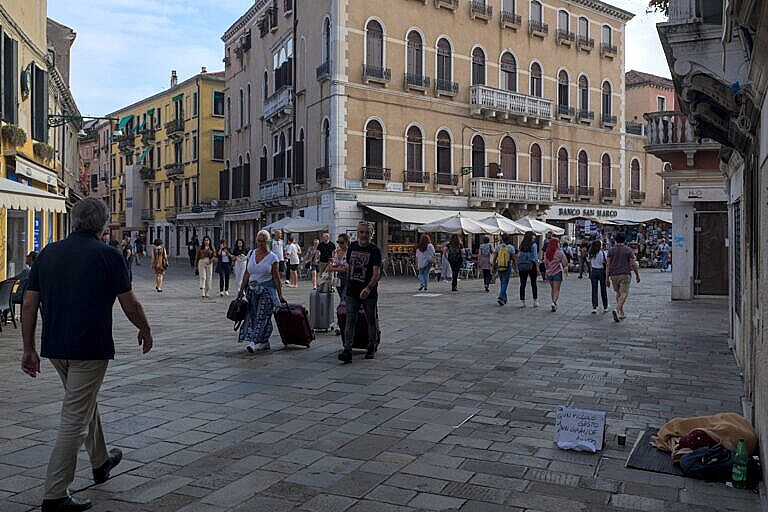

This post is the fourth part of a series on the changes made to create the Strada Nova, which connects the railroad station with the Rialto area. The Strada Nova is arguably the beginning of mass tourism in Venice.
The previous post covers Rio di San Leonardo, and the next Santa Fosca and San Felice.
Curiosità Veneziane by Tassini has entries on the Due Ponti (translated) and L’Anconetta.
Bibliography
Corner, Flaminio. Notizie storiche delle chiese e monasteri di Venezia e di Torcello, Padova. Stamperia del Seminario, Appreffo Giovanni Manfrè, 1758.
Tassini, Giuseppe. Curiosità Veneziane ovvero Origini delle denominazioni stradali di Venezia. 1863.


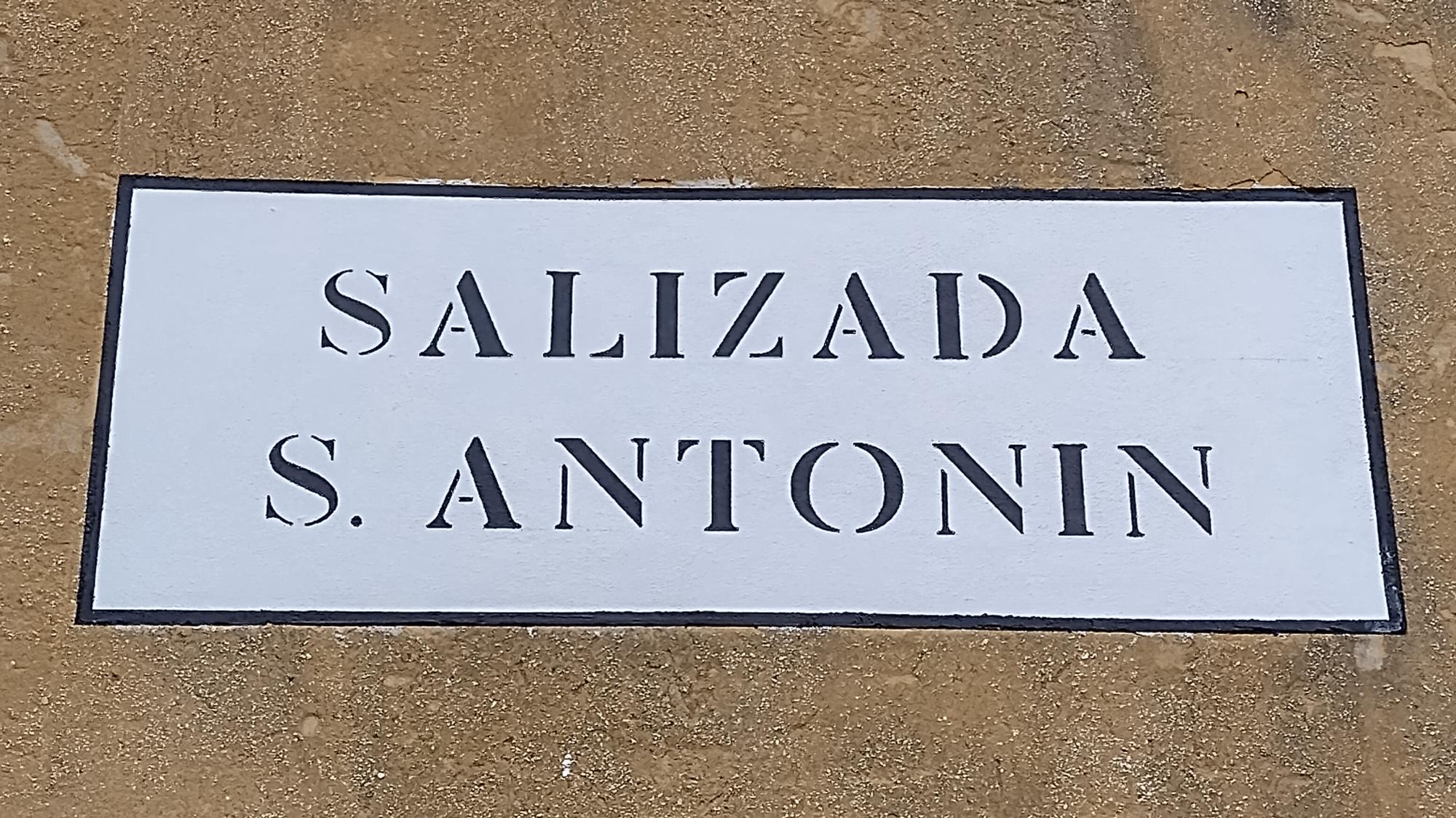
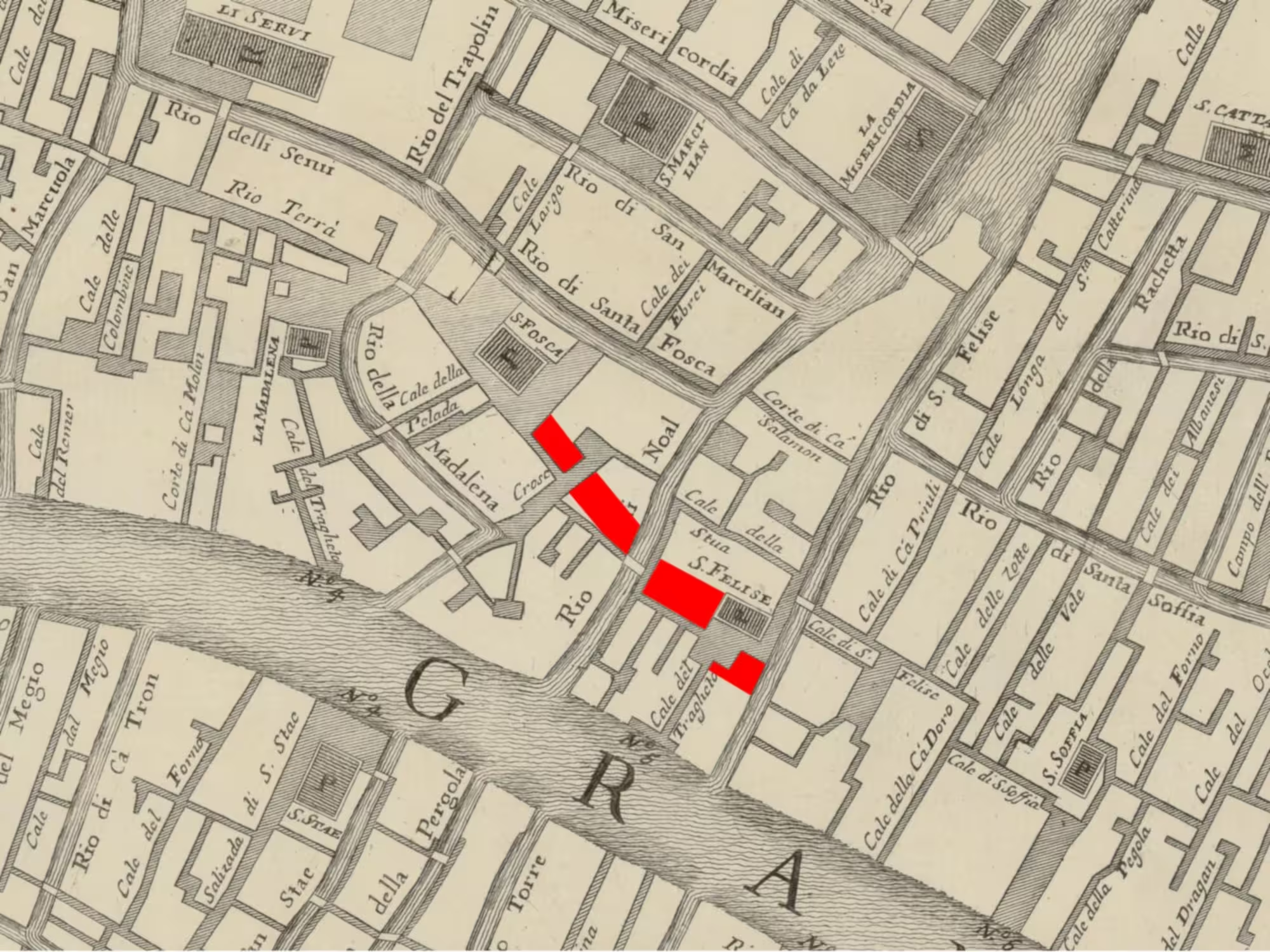
Leave a Reply